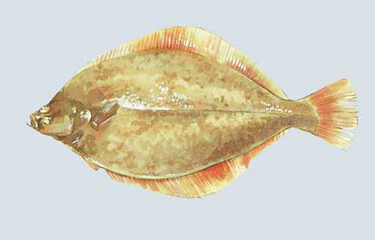The U.S. state of North Carolina’s summer flounder trawl fishery typically occurs in waters off New Jersey and New York, outside of the Southern flounder range, with the catches landed in North Carolina under the state’s summer flounder quota – the lion’s share among U.S. East Coast states at 27.44 percent.
For the 2021 fishing seasons, the coastwide commercial quota has been set at 11.53 million pounds, approximately a 49 percent increase over the previously-set 2019 quota.
Harvest of both summer and Southern flounder in North Carolina remained consistent for the past several years. Prices have also remained consistent with the average retail price from USD 8.00 to USD 12.00 (EUR 6.81 to EUR 10.22) per pound for filets and USD 4.00 to USD 5.00 (EUR 3.41 to EUR 4.26) per pound for whole fish. Price to fisherman has varied between a low of USD 3.50 to USD 5.00 (EUR 2.98 to EUR 4.26) throughout the season.
Jeff Styron of Oriental, North Carolina-based Garland Fulcher Seafood said the situation has improved following a difficult year caused by the COVID-19 pandemic.
“We were basically shut down last year,” Styron said. “With few restaurants purchasing products, we ended up with a lot of frozen fish and slim markets. Now the demand has gone crazy.”
Styron said his company’s boats landed more than 30,000 pounds of ocean flounder recently, only to experience a drop in prices.
“It’s normal. I paid USD 4.00 [EUR 3.41] to fishermen last week and then USD 2.75 [EUR 2.34] this week. I won’t be surprised to see it drop to USD 2.50 [EUR 2.13] next week. I’m just glad to see things pick up. Right now, flounder fillets are going for about USD 8.50 [EUR 7.24] a pound and we’ve shipped out 2,000 to 3,000 to restaurants.”
However, concern over prices is far from the top of the list for the state’s inshore commercial fishermen. While the summer flounder fishery is expected to remain stable, the inshore Southern flounder season has changed drastically given the sweeping regulatory changes recently implemented by the North Carolina state government. In 2019, the North Carolina Division of Marine Fisheries recommended – and the state’s Marine Fisheries Commission approved – substantial harvest reductions the DMF said were necessary to rebuild the Southern flounder stock.
The commercial Southern flounder harvest seasons are now divided into three sections — Northern, Central and Southern. Beginning 15 September and 21 ending October, each area will open for approximately two-to three-week periods. According to the DMF, Southern flounder harvest reductions of 62 percent in 2019 and 72 percent beginning in 2020 were necessary to prevent overfishing.
North Carolina Fisheries Association Executive Director Glenn Skinner said while the reductions are significant, his association’s members recognized the need for them.
“Our state has stepped up and taken the lead on this issue. These measures are over the required 52 percent but necessary to preserve and grow the fishery,” Skinner said. “The truth is North Carolina, South Carolina, Georgia, and Florida share the same flounder stock, and the species is overfished throughout its range. Unlike the other three states, North Carolina’s statutes require us to take actions that should end overfishing in two years and rebuild the stock in 10 years, forcing North Carolina to severely restrict recreational and commercial flounder harvest. Florida and South Carolina are looking at options to rebuild the flounder stock, including raising size limits, lowering bag limits, and seasonal closures. But, unlike North Carolina, they have no statutory requirement to act, so their management measures will certainly not be as restrictive.”
Commercial fishermen landed 42.9 million pounds of seafood in North Carolina in 2020. This was a 19 percent decrease from 2019 landings of 53 million pounds and a 20 percent decrease from the five-year average (2015-2019) of 53.7 million pounds.
“It’s unfortunate that these needed measures disadvantaged our fishermen, but I am proud that we are leading the way as a responsible member of the commercial fishing community,” Skinner said.
The estimated value for landings in 2020 was USD 77.4 million (EUR 65.9 million) , a decrease of 10.7 percent from the 2019 estimated value of USD 86.7 million (EUR 73.7 million) and a decrease of 11.9 percent from the five-year average of USD 87.9 million (EUR 74.8 million). The overall decrease in landings is likely resulting from the effects of COVID-19.
Of the top five species landed by weight in North Carolina, summer flounder ranked third at 1.8 million pounds, following blue crab at 13.1 million pounds and shrimp at 9.7 million pounds. Ranked by value, summer flounder ranked fourth totaling USD 3.7 million (EUR 3.2 million), following shrimp at USD 22.3 million (EUR 18.9 million), blue crab at USD 19.1 million (EUR 16.3 million), and oysters at USD 4.5 million (EUR 3.8 million).







